

| Previous Flies |
| Fly Tying Terms |
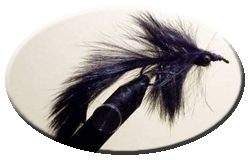
THE BUNNY LEECH WORM
This is a very easy and quick fly to tie. And it is very productive for Smallmouth and Largemouth Bass in black, olive, or purple. Tied in grey, or white, it is great for white bass and stripers. Tied in marine colors, such as blue, or pink, and tied on larger hooks, it makes a good salt-water fly. I can’t claim this as an original pattern because I remember running across a similar pattern online somewhere. I can’t remember where, or what it was called, but this is similar enough for me not to claim it. If I ever find it again, I will post the proper credits (and name). In any case, it is a great pattern. It can be tied in less than 5 minutes, even by a novice. Fish it like you would any leech, or worm pattern, with slow, deliberate, and sporadic strips.
Materials:

Start it like you would any fly, by coating the hook shank with head cement, and laying a good thread base along the shank to the curve of the hook.
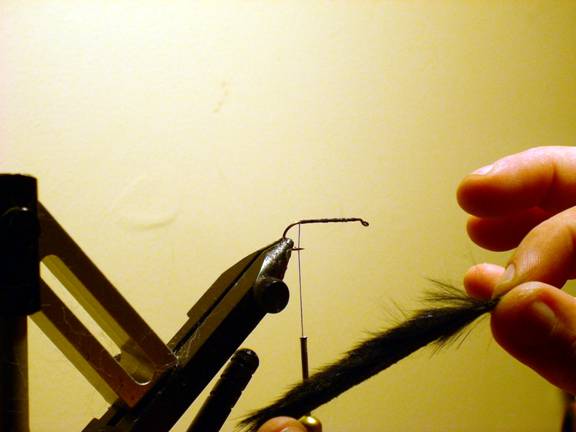
2. Measure out your zonker strip and cut it to size. You want it about 2-1/2 times the hook shank length
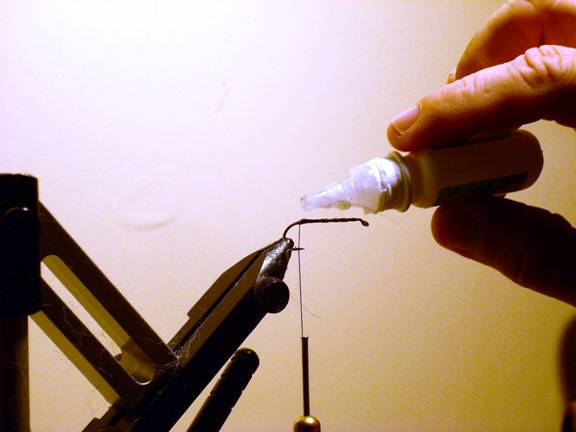
3. Apply a drop of Zap-A-Gap to the attachment point on the hook shank, to help keep it from spinning as you wrap the thread.

4. Separate the fur at the tie-in point on the strip, and tie it to the hook shank tightly (this is why I use 3/0 thread on this pattern, so I can apply lots of pressure to get it tight). Then, wrap the thread forward to 2 eye-widths from the hook eye.
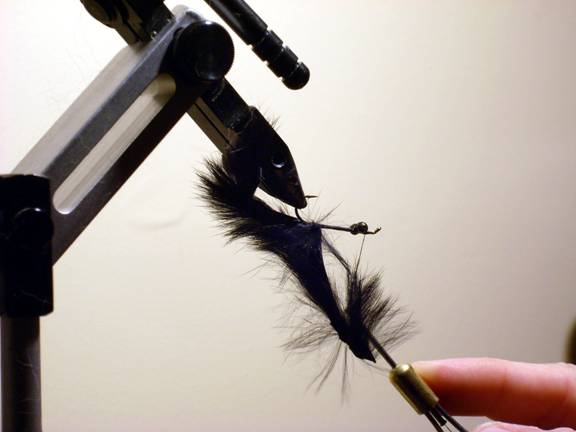
5. Invert the hook in the vise, and tie on a pair of eyes, using the standard figure 8 wrap. Finish with the thread in front of the eyes. Apply a drop of Zap-A-Gap on top of the eyes so they won’t ever shift.
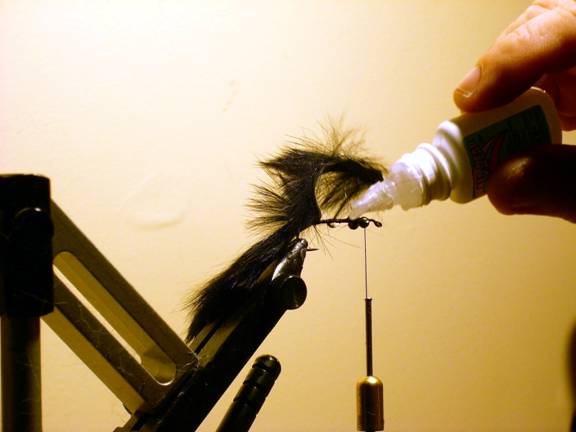
6. Return the hook to its upright position, and apply a thin bead of Zap-A-Gap along the top of the hook shank
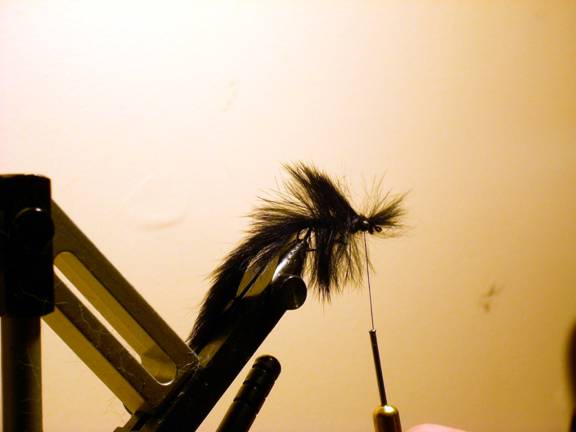
7. Tightly wrap the zonker strip forward, around the hook shank, and tie it off just in front of the eyes.
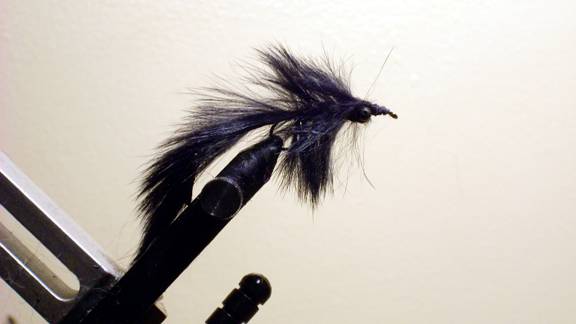
8. Trim, make a neat head, whip finish, cut the thread, and apply a thin coat of head cement to the finishing wraps. You’re done.
About the Author

I’ve been an active fly fisherman, and fly tyer since the late 1960s. I’ve gained a lot of experience in all those years, and I try to put it to good use. 21st Century materials and techniques are revolutionizing fly tying, and angling.
Fly of the week Archives
For more great flies, check out: Beginning Fly Tying, Intermediate Fly Tying and Advanced Fly Tying.
[ HOME ]
[ Search ] [ Contact FAOL ] [ Media Kit ]